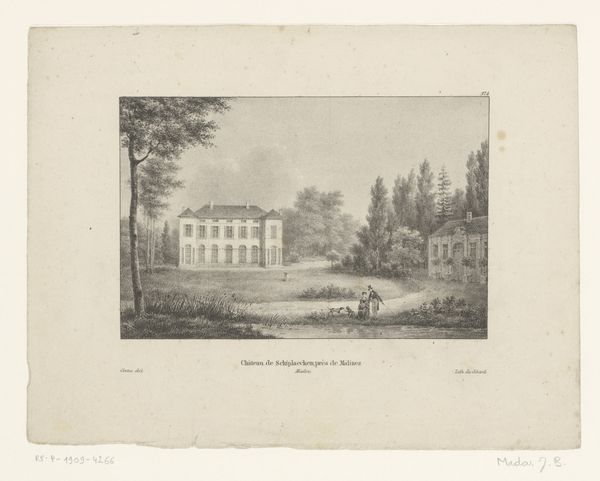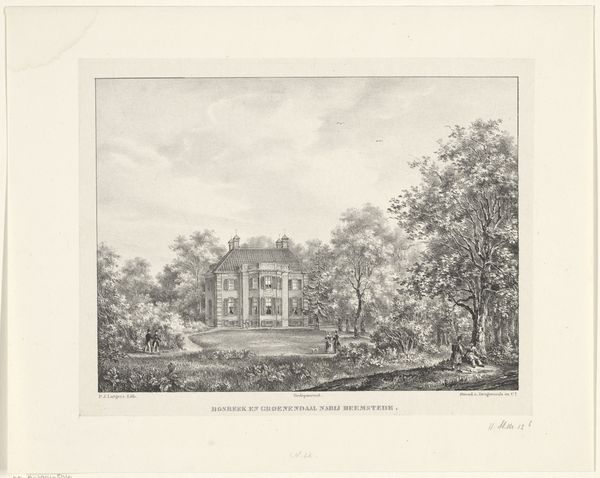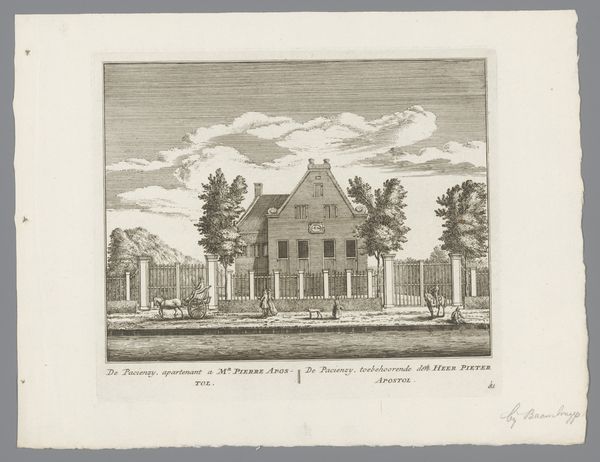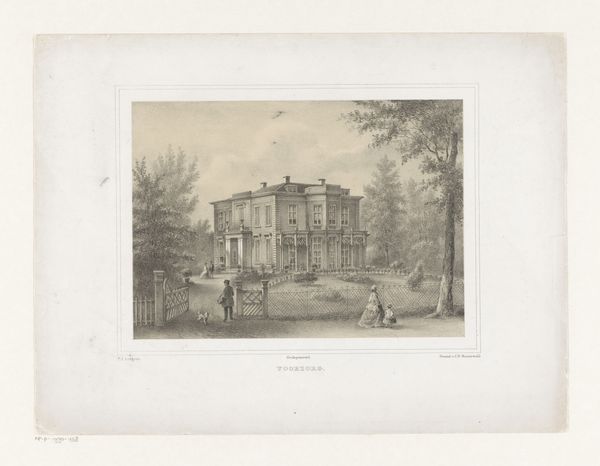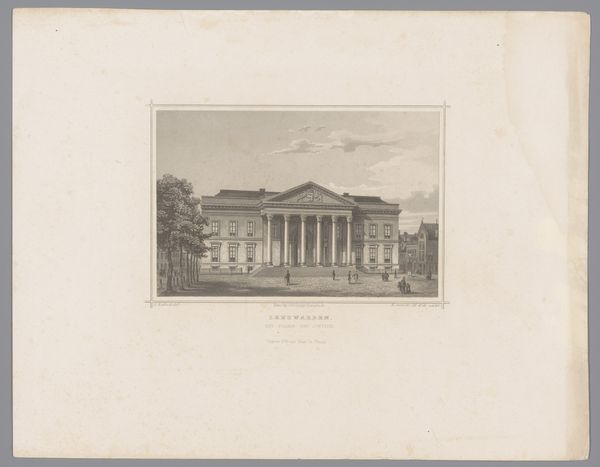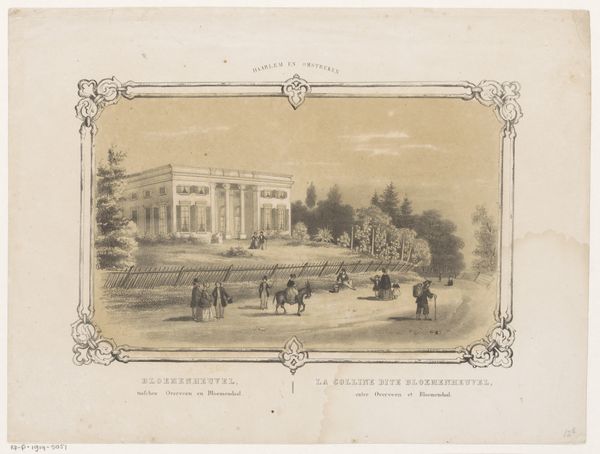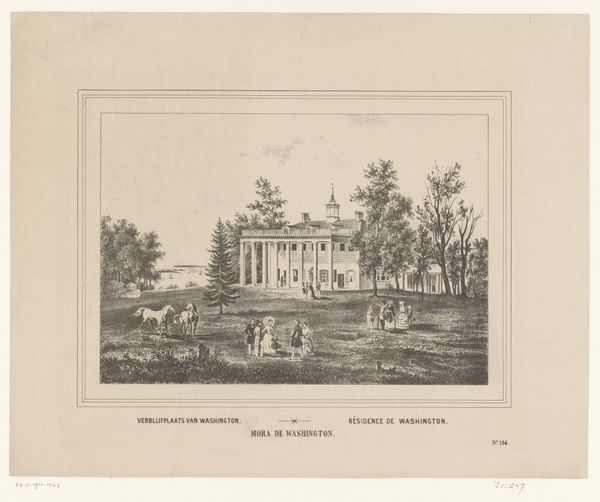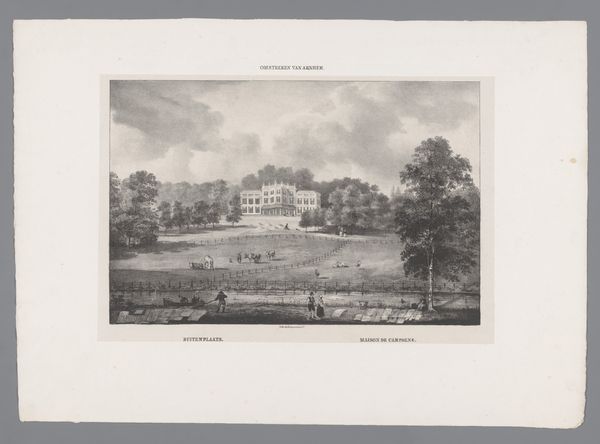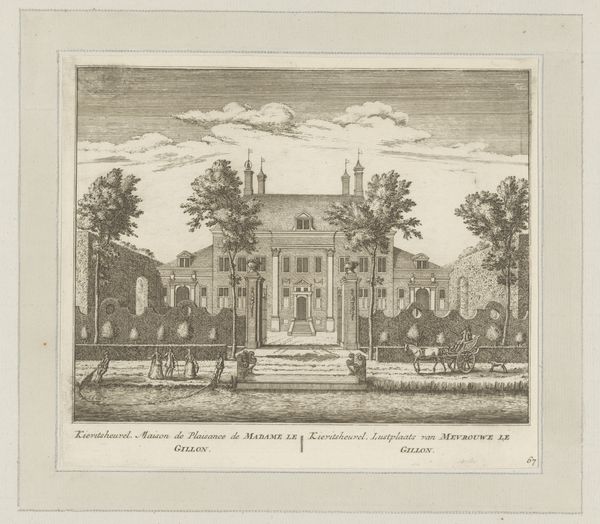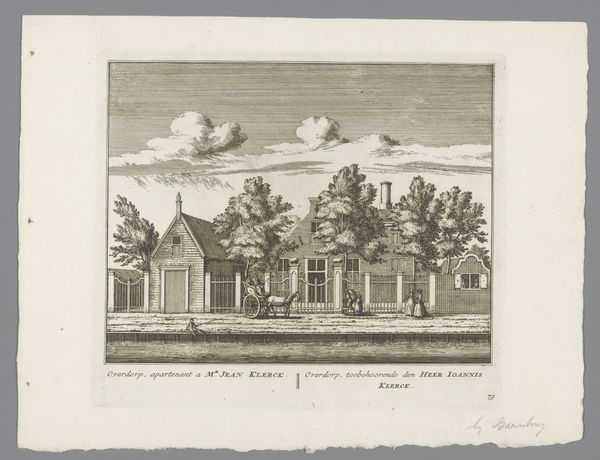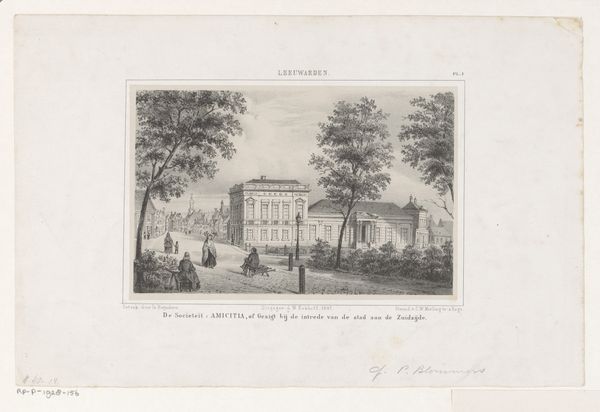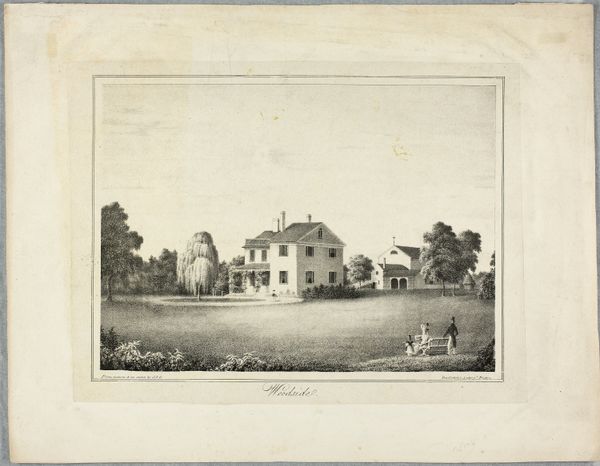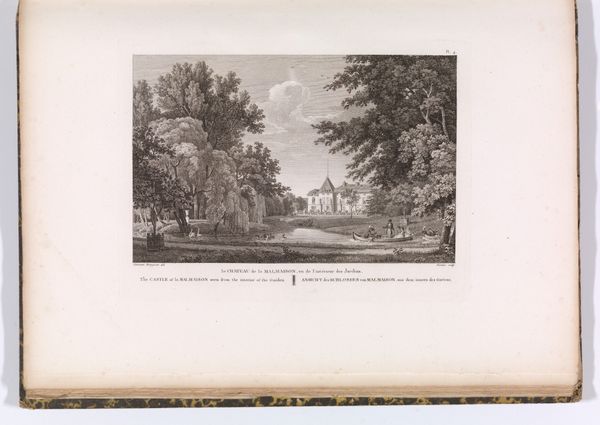
print, etching
# print
#
etching
#
landscape
#
romanticism
#
cityscape
Dimensions: height 265 mm, width 380 mm
Copyright: Rijks Museum: Open Domain
Editor: So, this is "Hofstede Eindenhout aan de Wagenweg te Haarlem," an etching by Petrus Josephus Lutgers, dating from the late 1830s to mid 1840s. The building almost seems to be emerging out of the trees. What's your read on this etching? Curator: Well, instantly I am struck by how Lutgers presents this building. It isn't simply a depiction of a place; it evokes an era. Look at the symmetry, the imposing columns. Don't these features harken back to a fascination with classical antiquity? A very popular trend that shaped Western architecture and thinking for centuries? Editor: Yes, I see what you mean. It’s almost like a temple. What’s significant about this cultural memory? Curator: Exactly! Temples are spaces of transformation, aren't they? In the 19th century, the home was elevated – almost sanctified – as a similar place for individual and family growth. And how Lutgers situated it just beyond that veil of trees… suggests the idea of uncovering some grand potential through cultivated engagement with this domestic sphere. Even the figures populating the yard seem reverent in the way they pose within the carefully arranged nature. Do you think it is successful at setting up such emotion? Editor: I think it definitely makes it look idyllic, in a very composed way. Almost like a stage setting. It has made me think about home and family in a new way. Curator: And that’s what the images from the past can trigger in us. The symbolic architecture of feeling continues its existence across time. Editor: Right, the image, although historical, reflects something eternal about the role of ‘home’. I learned a lot from this talk!
Comments
No comments
Be the first to comment and join the conversation on the ultimate creative platform.
